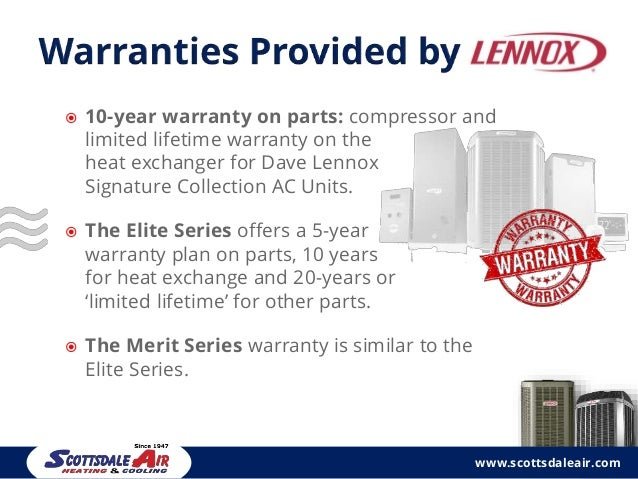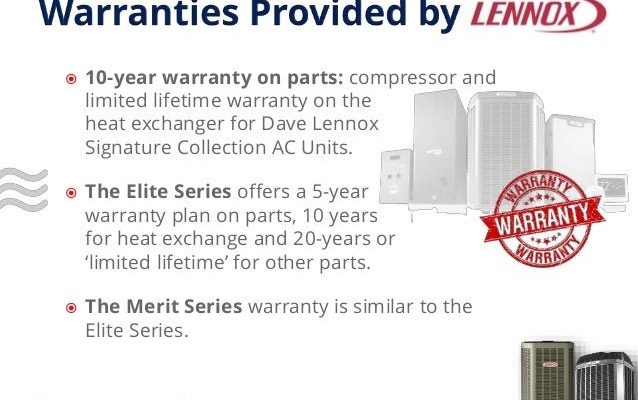
But HVAC warranties can feel like reading the fine print on a magic trick—there’s always a “but” or “except for” hiding somewhere. Standard warranty coverage for a Lennox HVAC system can seem a bit confusing if you’re new to this. Let’s walk through what’s actually covered, how long you can count on it, and what makes these warranties tick. Think of this as a friendly conversation at your kitchen table, and let’s make sure you know exactly what your Lennox system’s warranty means for your peace of mind.
What Does a Standard Lennox HVAC Warranty Cover?
First off, Lennox HVAC warranties aren’t a one-size-fits-all deal. The details depend on which system you have and when it was installed. But in the most basic sense, the standard warranty covers the major components that keep your heating and cooling running, like the compressor, heat exchanger, and internal working parts.
Here’s the thing: if you’re expecting it to cover every little squeak and hiccup, you might be disappointed. Standard Lennox warranties are meant to protect you against manufacturer defects—not things like normal wear and tear or issues caused by bad installation. That means if your system comes with a faulty part from the factory, Lennox typically takes care of it.
A standard warranty usually includes:
- Parts coverage for key components
- Heat exchanger warranty (especially on furnaces)
- Compressor coverage (for air conditioning units and heat pumps)
But, the labor to fix or replace parts? That’s often not covered unless you buy an extended warranty or a service agreement. Always ask your installer what’s included up front—sometimes the devil’s in the details.
How Long Is the Standard Lennox HVAC Warranty?
You might be wondering, “Okay, but what’s the actual number? How many years am I covered?” Great question. Most new Lennox HVAC systems come with a standard 10-year limited warranty on covered parts—but only if you register your product within 60 or 90 days, depending on the model.
Here’s a quick look at typical Lennox warranty durations:
| Product Type | Parts Warranty | Heat Exchanger/Compressor Warranty |
| Signature Series | 10 years (with registration) | Lifetime (heat exchanger) / 10–12 years (compressor) |
| Elite Series | 10 years (with registration) | 20 years–Lifetime (heat exchanger) / 10 years (compressor) |
| Merit Series | 5 years (unregistered) / 10 years (registered) | 20 years (heat exchanger) / 5 years (compressor) |
If you skip the registration step, your coverage could drop to as little as 5 years for parts. And it’s almost always “limited,” meaning it only covers certain things, not every possible breakdown. That’s why it’s crucial to jump online and register your new Lennox HVAC as soon as you can. It’s like syncing your phone—if you don’t do it, you miss out on the best features.
What’s Not Included in the Standard Warranty?
Honestly, this is where some folks get tripped up. The standard Lennox HVAC warranty won’t cover everything under the sun. Think of it more like a basic insurance policy: it’s got your back for big issues, but not everyday annoyances.
Here’s what’s usually not included:
- Labor costs for installation or repairs
- Routine maintenance items (like filters, belts, batteries, or cleaning)
- Problems caused by poor installation, misuse, or lack of maintenance
- Diagnostic fees or troubleshooting visits
- Accessories and external controls (like universal or programmable thermostats, remotes, and wiring)
If your outdoor unit goes on the fritz because nobody cleaned the coils or changed the filter, that’s on you—not Lennox. The same goes if a technician messes up the installation code or pairs the wrong remote with your system. The warranty only kicks in for factory defects in covered parts.
Registration: The Key to Unlocking Lennox Warranty Benefits
Let me explain: registering your Lennox HVAC isn’t just a suggestion—it’s almost required if you want the full warranty. If you buy a new system and never register it, you could lose half your coverage (or more). It’s like buying a new car but never getting the keys.
Registration is pretty simple. Usually, you just:
- Go to the Lennox website
- Enter your system’s model and serial number (these are on the unit itself—check near the code label)
- Add the installation date and your contact info
- Submit the form, and you’re all set
Don’t wait—there’s typically a short window (60 or 90 days) after installation. If you forget, Lennox drops you back to a much shorter, less generous warranty. This isn’t just a formality—it’s your ticket to that 10-year coverage everyone talks about.
Extended Warranties and Service Agreements: What Are Your Options?
Here’s where things get interesting. The standard Lennox HVAC warranty is solid, but it doesn’t cover labor or every possible issue. That’s why a lot of homeowners consider an extended warranty or a maintenance plan from their installer or local dealer. Think of it as buying extra peace of mind.
Extended warranties usually add:
- Labor coverage for repairs—this is big, since labor can be pricey
- Longer timeframes for certain parts or accessories
- Annual maintenance checks or troubleshooting visits
But, a word of caution: always read the fine print and compare what’s included. Some plans only cover specific issues, and not everything is handled by Lennox directly—some third-party companies manage these contracts. If you’re someone who likes to code or tinker, you might want that extra coverage in case something odd happens during a reset or pairing attempt.
Comparing Lennox Warranties to Other Brands
You might be curious how Lennox’s warranty stacks up against the competition. After all, you want value for your investment, right? In general, Lennox’s 10-year limited parts warranty is right in line with what brands like Trane, Carrier, and Rheem offer—assuming you register on time.
Where Lennox stands out a little is in their heat exchanger warranties for certain high-end furnaces (like the Signature Collection). Some offer a lifetime warranty, which can be a huge selling point if you plan to keep your system for decades.
But, here’s the real talk: warranty coverage is only as good as the installer behind it. Even the best system can run into trouble if it’s not sized or installed properly. No warranty will save you from issues caused by poor installation, skipped maintenance, or trying to pair a universal remote that isn’t compatible. So, always work with a reputable local pro who knows how to sync, reset, and troubleshoot Lennox equipment.
How to Make a Warranty Claim With Lennox
If you ever do need to file a warranty claim for your Lennox HVAC system, don’t panic. The process is more straightforward than you might think. Start by calling your installer or dealer—they’re usually the ones who’ll handle the paperwork and labor. They’ll verify your product’s registration and check if the problem falls under warranty.
Here’s a typical process:
- Describe the issue (be ready to explain any error code or troubleshooting steps you tried)
- The technician will inspect your unit and confirm if it’s a covered part
- If covered, they’ll order the part from Lennox and schedule repairs
- You’ll pay for labor and any non-warranty items (unless you have an extended warranty)
Keep your original paperwork handy, and always ask for a copy of your registration confirmation. If there are questions about your coverage, the serial number is your best friend—it’s the key to unlocking all that warranty goodness.
Wrapping Up: Making the Most of Your Lennox HVAC Warranty
So, how long is the standard warranty for Lennox HVAC systems? The answer is usually a 10-year limited parts warranty—but only if you register your system on time. Additional coverage for components like heat exchangers and compressors depends on your specific model and series. Honestly, it’s a pretty solid safety net if you play by the rules and take good care of your system.
Just remember the basics: register your equipment, keep up with regular maintenance, and always work with trusted pros. That way, you’ll get the most out of your Lennox investment and avoid any warranty-related surprises down the road. Having a reliable HVAC system isn’t just about the equipment—it’s about the peace of mind that comes from knowing you’re covered if things go sideways. And that, in my book, is worth its weight in gold.
